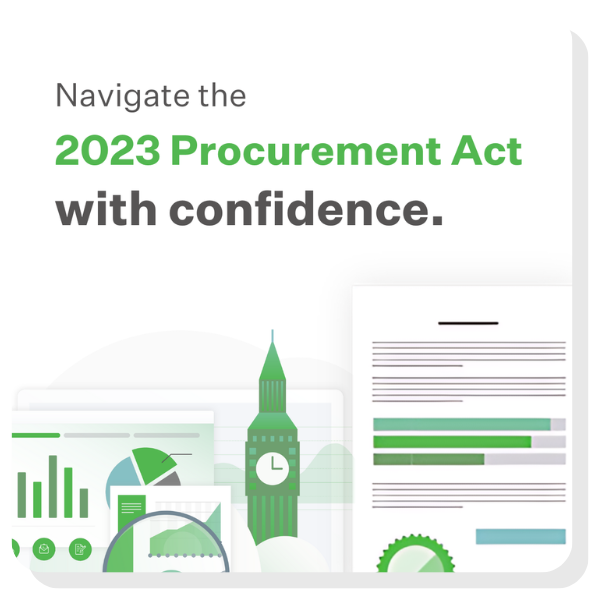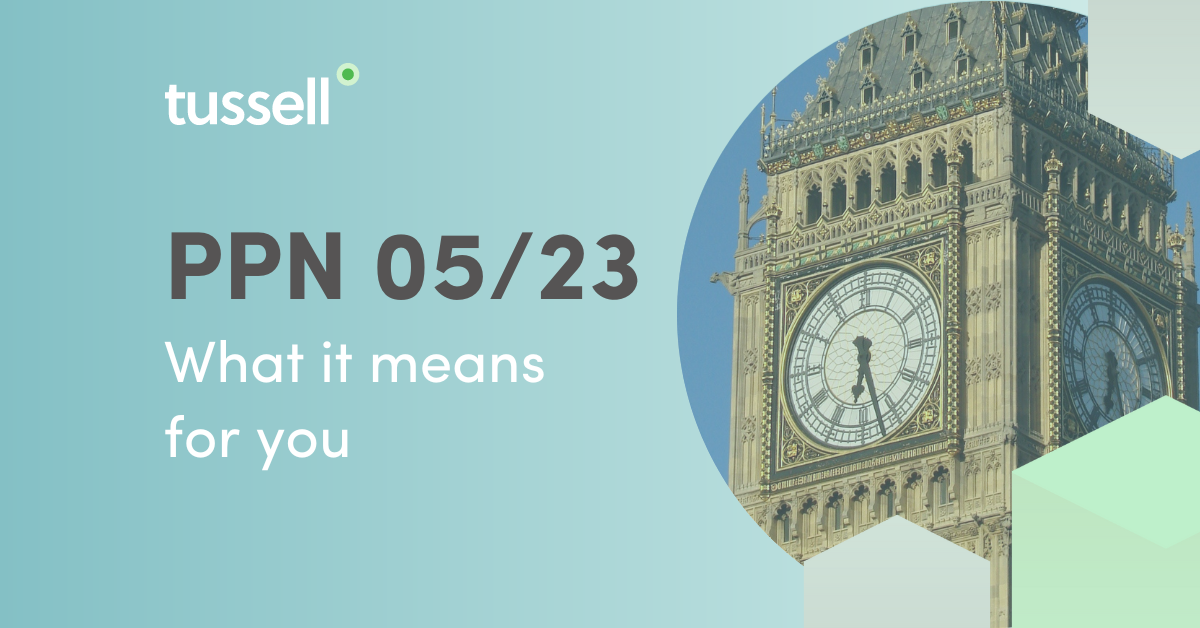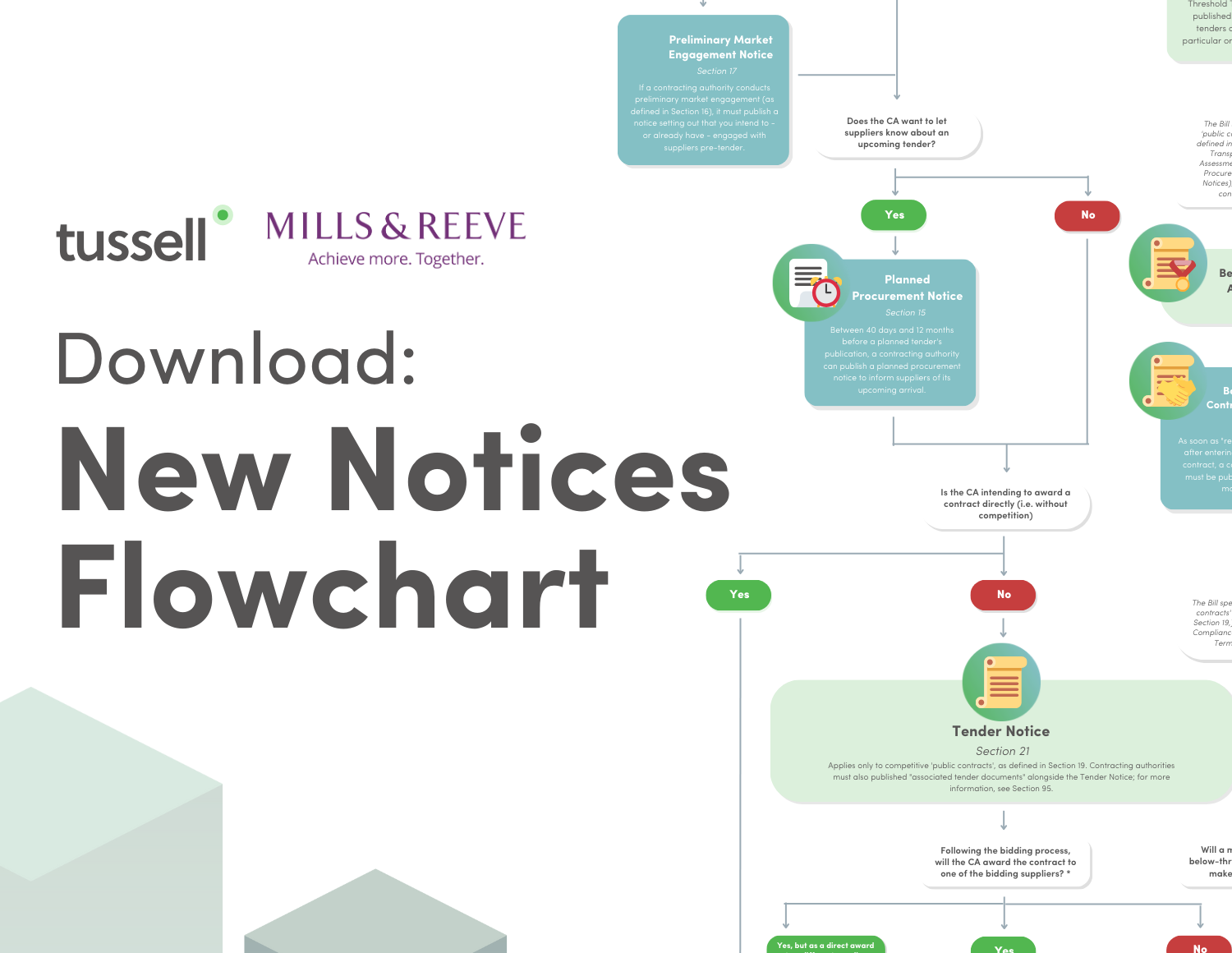On May 25th, the Cabinet Office published its latest Procurement Policy Note (PPN) - PPN 05/23: Implementing new Free Trade Agreements.
This PPN introduces a handful of important changes to how your contracting authority can market tenders, and value & terminate contracts. It's critical that you're up-to-speed on the changes being introduced.
In this quick blog, we've summarised the key changes introduced by the PPN, and what it means for you.
💡 PPN 05/23: what's new?
This PPN was introduced to ensure that UK public procurement complies with the new Free Trade Agreements introduced between the UK and Australia & New Zealand.
The key changes cover three key areas:
- Unknown contract values
The value of contracts can no longer be left blank when the estimated value of the procurement is unknown or cannot be approximated.
Instead, contracting authorities must now publish these contracts at the minimum applicable threshold value. As such, the full regime applies to these contracts.
The PCR regime still doesn't apply to contracts that have an estimated value below their applicable threshold.
- Prior Information Notices (PINs)
Sub-central contracting authorities can no longer use PINs (or Periodic Indicative Notices) as a way to call for competition.
These instruments can still be used for other purposes, as outlined in Public Contracts Regulations 2015. - Termination of contracts
Contracting authorities are already barred from prematurely terminating or modifying contracts as to avoid regulations.
The Free Trade Agreement means that contracting authorities can't do so to avoid international obligations also.
❓ Who does it apply to & when?
PPN 05/23 applies to all public sector contracting authorities across Central Government, Local Government, executive and non-departmental bodies, the NHS and utilities.
It does not apply to wholly or mostly devolved contracting authorities in Scotland, Wales and Northern Ireland (as defined by regulations 1(7) and 1(8) in PCR 2015)
PPN 05/23 came into force on May 25th 2023.
✔️ What does this mean for me?
The impact of this PPN varies.
On the one hand, having to enter the relevant threshold quantity for unknown contract values shouldn't be too burdensome for your team - just make sure you're clued up on which thresholds apply to which of your contracts, depending on what kind of contracting authority you are.
On the other hand, not being able to use PINs to call for competition quite heavily affects how they're commonly deployed. You'll have to rely on conventional contract notices to achieve this from now on.
PINs can still be used - as stated under PCR 2015 - to "make known [a contracting authority's] intentions of planned procurement". In other words, they can still be used to encourage an early dialogue with potential suppliers about complex or new problems, and help inform future tenders.
Finally, if and when your contracting authority decides to terminate a contract, you must remember the extra caveat that you can't do so to avoid an international obligation - this likely won't occur very often, but it's important for your team to consider how you might inadvertently negate an international obligation by cutting short a contract.
*
This latest PPN brings some important changes to how your contracting authority procures. It's vital you're up-to-speed on its 3 key changes.
You can read our summaries of the Cabinet Office's PPNs here:
- PPN 08/23: Using the Standard Contracts
- PPN 07/23: Government Security Classifications Policy 2023
- PPN 01/23: Requirements to publish on Contracts Finder
- PPN 08/21: Taking account of a bidder's approach to payment in the procurement of major government contracts
- PPN 06/21: Taking account of Carbon Reduction Plans in the procurement of major government contracts
- PPN 05/21: National Procurement Policy Statement
We publish lots of helpful guides, tips & tricks and analysis into public sector procurement every week. Sign up to our newsletter to have all of it sent straight to you.



![[Gov] New Nav Bar, Solutions - DSIT citation v1, Rounded](https://www.tussell.com/hubfs/%5BGov%5D%20New%20Nav%20Bar%2c%20Solutions%20-%20DSIT%20citation%20v1%2c%20Rounded.png)
![New Nav Bar - New Tag [Gov]](https://www.tussell.com/hubfs/New%20Nav%20Bar%20-%20New%20Tag%20%5BGov%5D.png)

![[Gov] New Nav Bar, Insights - SS Report v1, Rounded](https://www.tussell.com/hubfs/%5BGov%5D%20New%20Nav%20Bar%2c%20Insights%20-%20SS%20Report%20v1%2c%20Rounded.png)


.png?width=80&height=80&name=james%20v2%20(1).png)






